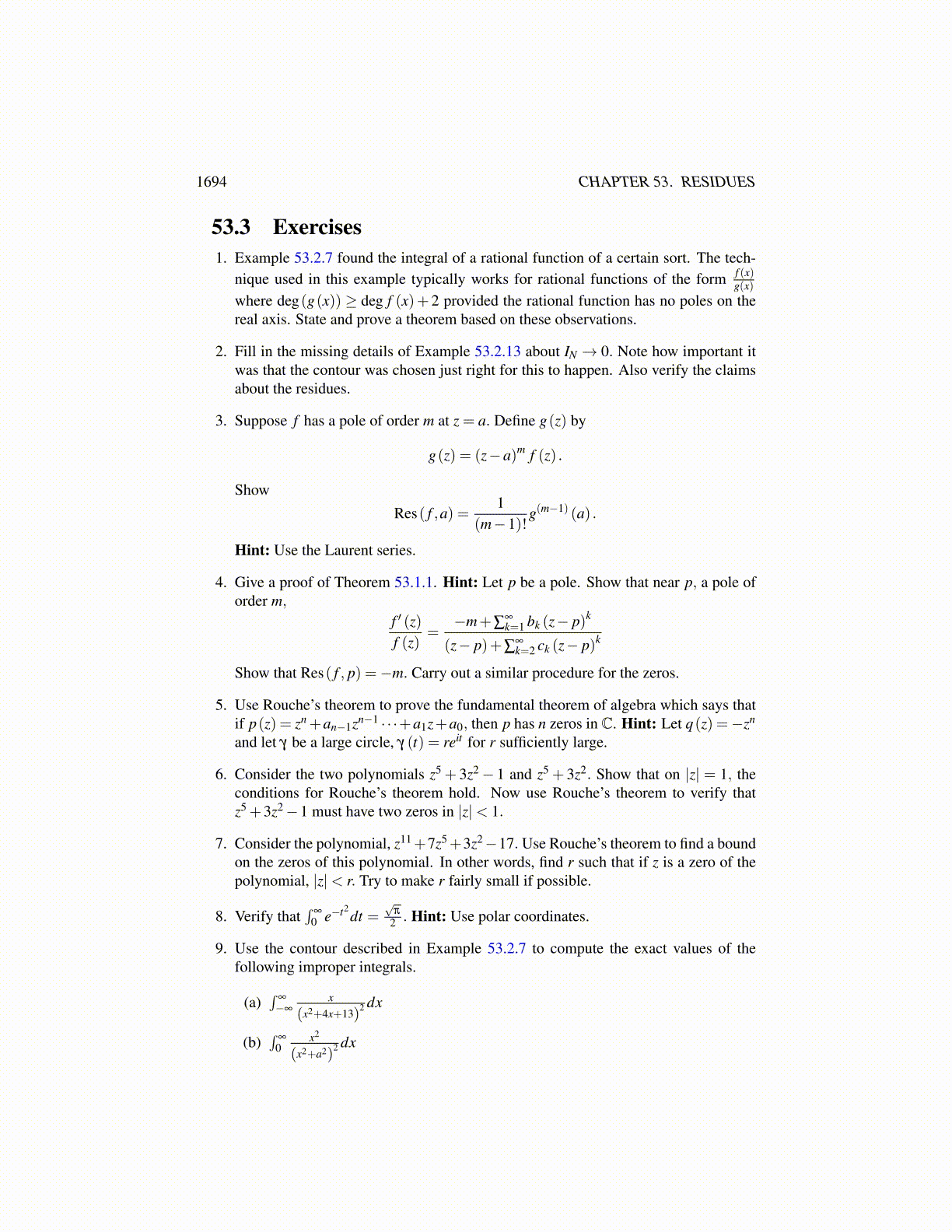
1694 CHAPTER 53. RESIDUES
Example 53.2.12 The Fresnel integrals are∫∞
0cos(x2)dx,
∫∞
0sin(x2)dx.
To evaluate these integrals consider f (z) = eiz2on the curve which goes from the origin
to the point r on the x axis and from this point to the point r(
1+i√2
)along a circle of radius
r, and from there back to the origin as illustrated in the following picture.
x
y
Thus the curve to integrate over is shaped like a slice of pie. Denote by γr the curvedpart. Since f is analytic,
0 =∫
γr
eiz2dz+
∫ r
0eix2
dx−∫ r
0ei(
t(
1+i√2
))2(1+ i√2
)dt
=∫
γr
eiz2dz+
∫ r
0eix2
dx−∫ r
0e−t2
(1+ i√
2
)dt
=∫
γr
eiz2dz+
∫ r
0eix2
dx−√
π
2
(1+ i√
2
)+ e(r)
where e(r)→ 0 as r→ ∞. Here we used the fact that∫
∞
0 e−t2dt =
√π
2 . Now consider thefirst of these integrals. ∣∣∣∣∫
γr
eiz2dz∣∣∣∣ =
∣∣∣∣∫ π4
0ei(reit)
2rieitdt
∣∣∣∣≤ r
∫ π4
0e−r2 sin2tdt
=r2
∫ 1
0
e−r2u√
1−u2du
≤ r2
∫ r−(3/2)
0
1√1−u2
du+r2
(∫ 1
0
1√1−u2
)e−(r1/2)